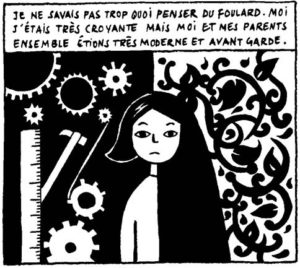In “The Digital Afterlives of This Bridge Called My Back,” the author subtly addresses the complex relationship between academic labor of women of color and unpaid online labor. Arguably this book has been more popular in online communities than in retail, thus introducing the intricacies of economics in regards to women of color. Recognizing that “‘traditional’ classrooms have not always been a welcoming or socially dynamic place for women of color”, the formation of digital classrooms provide “an ‘idealized’ unversity, one the obscures the labor and identity inequalities that have long existed” (259). Although these social networks provide a space for women of color to connect and form their own educational norms, the scholarly labor of the authors goes unpaid. This introduces another form of inequality because of the expectation that this labor by women of color does not deserve monetary compensation, but instead should settle for recognition only. Recognition and compensation are only mutually exclusive categories in the world of people of color and this is terrible choice to have to make. The intention of this book was to be “used as a required text in most women’s studies courses” and the authors did not only “mean just ‘special’ courses on Third World Women or Racism” (260). By reducing this popularity of this book to only online communities serves as a larger disservice for the feminist movement and goes directly against the wishes of the authors of this book. Furthermore, the authors deserve a monetary reward for their scholarly labor and anything otherwise functions as a form of racial exploitation.
This conversation about the how recognition serves as payment for the labor of people of color, reminds me how “Black twitter” is the cornerstone of every major marketing or PR ad. The formation of “Black Twitter” is an informal digital community that formed naturally as a Black people found each other on this social media app and due to their shared life experiences created comedic gold out of their everyday sufferings and traumas. Black twitter is responsible for the major dance, fashion, and slang trends that dominate the modern social scenes. One modern example of the exploitation of this community comes from the video game Fortnite which became highly popular due the characters preforming major dance trends created by Black artists, which then were popularized by Black twitter. However, this video game renames the dances, thus stripping the credibility of the Black artists who created the dances and how they became popular in the first place. This relates to This Bridge Called My Back and how although the book was distributed through online networks such as Tumblr and the authors were unpaid, media corporations such as Yahoo who owns and sells advertising space on Tumblr were indirectly benefiting (256). The truth of the matter is that Black people are innovators and at the forefront of every major trend and discovery, but the lack of compensation renders them invisible in a world that values capitalism over everything. Either America needs to revoke capitalism as the dominate economic system in order to equalize labor regardless of race, or they must begin paying Black and Brown people their worth.
.@EpicGames has been profiting off of black dances in #Fortnite without compensating or even crediting the artists who created them. @chancetherapper inspired us to ask: can you copyright a dance move?pic.twitter.com/ERxEKBSzV2
— detective pikachu (@mannyfidel) September 27, 2018


